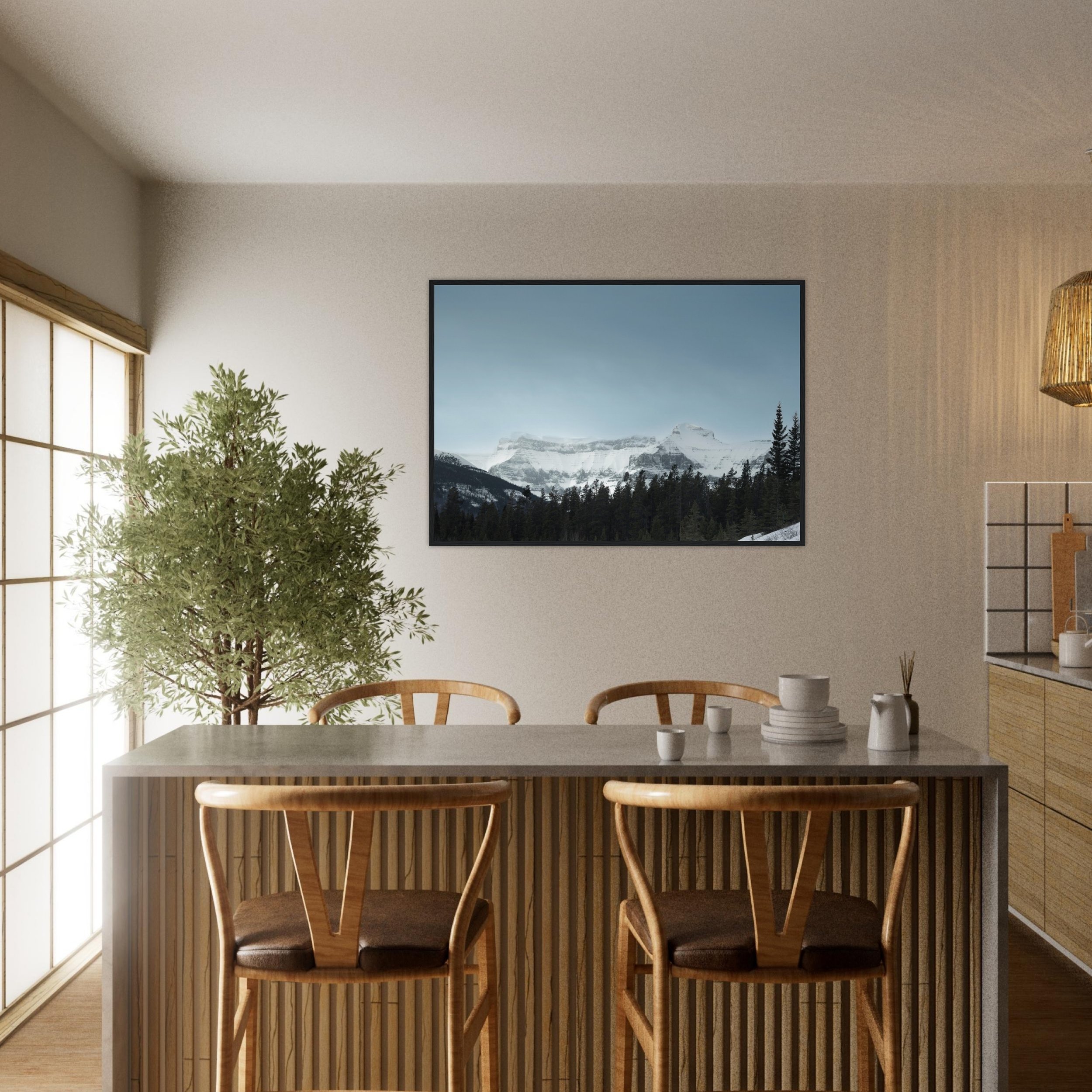How to choose your wall art…
Identifying the right colors
When choosing which of our pieces to buy, it’s important to consider where you are going to place it to ensure it’s a perfect fit! Artwork and photography can have a huge impact on a space, even if we don’t realize it at first. One of the reasons photography is a passion of mine is my background in art and design. By day I am an interior designer, and one of my favorite aspects of design is the ability to transform spaces with simple styling tips like wall art.
Take the following scene. We have a fairly neutral room, with some natural light coming in through the window to the left. All of the furnishings are neutral, with a slight warmth to them. Look at the difference between the two.
Tidal Wave, Temporal Tides
In the tidal wave image, we can see the blues iterating with the whites in the room and brightening them. It’s a subtle difference, but there is more contrast, which leads to a more dramatic look.
Dance, Temporal Tides
When we compare with the Dance picture, we can see that the tones blend into the room and add warmth. It’s a softer look, and thus a more subtle piece.
Let’s look at another example with the Mountain Moments Collection, between Alpine Bliss and Evergreen Elegance, in a warmer room. We have thrown in another variable with the layout (we’ll touch on this more in a bit).
Evergreen Elegance, Mountain Moments
Evergreen elegance boasts higher contrast, with brighter blues and whites, and darker shadows from the treeline. We can see the impact of this contrast on the kitchen surrounding it - the shadows on the island panels darken, but the light in the room also brightens. The gold in the room is also heightened, in contrast to the blue sky. In design, this is called a change in the hue.
Tone = measure of grey.
Hue = measure of vibrancy
Alpine Bliss, Mountain Moments
Now when we look at Alpine Bliss in the same space, the room’s color doesn’t alter, but the tone does. The room has less vibrancy and less hue variance because of the duller tones in the piece. The room appears softer.
Now let’s discuss orientation
The orientation of your artwork can also have a big impact on your space, and I would argue it’s even bigger than the colors. You might have heard of leading lines in design (and photography, though for this we are specifically focussing on them in a design sense- ignore the contents of the art for now!). They are a compositional technique where lines lead the viewer's eyes to a subject. To locate leading lines in frames, we need to find the closest parallels. We are using our Peyto Peaks print from the Mountain Moments Collection to demostrate.
For a horizontal frame the leading lines are going left to right, and for a vertical they are going up and down like this:
When we look at available space for wall art, we need to pay attention to the leading lines of the space.
In this space below, which do you think makes more sense?
Let’s look again with the leading lines.
With extra space to the sides, it makes more sense to have a horizontal piece here. Notice how it widens the room, as the fireplace does.
So, with all this said, here are the main things to consider when selecting a piece for you:
Where are you hoping to display your piece? What are the predominant undertones of your space? Are there lots of cool colors like blue/gray and blues, or warmer beiges and creams? Finding this can help determine whether a more vibrant or subtle piece is right for you!
What are the textures in your home? Identifying whether your home has modern or classic decor can help in choosing the right materials to match your style.
What is the shape of your space? Pay attention to your leading lines.
What frame option will work best with your existing. Desired style? We will touch on this in a new post soon!
Follow littlelens.photo for more
|
Follow littlelens.photo for more |
I hope this helped, and happy shopping!
Laura
lemonexploring x little.lens














